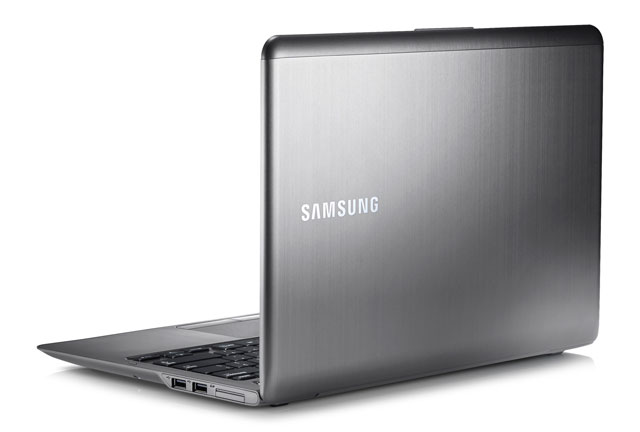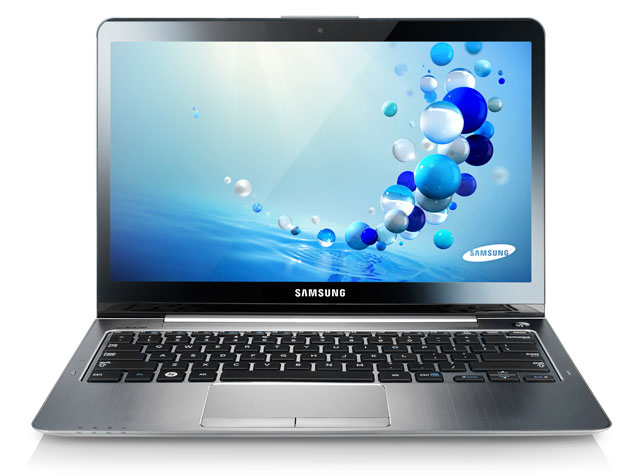
Korean electronics giant Samsung makes excellent laptops. Its Series 9 Ultrabook is one of the best we’ve had the pleasure of using and now, with the new Series 5, consumers have a slightly cheaper alternative that includes a touch display.
A touchscreen display is something we’d never previously have thought necessary on a laptop, but it’s something which we’d now rather not be without.
The Series 5 is available in only one configuration in South Africa and includes a Core i5 processor, 4GB of RAM and a 500GB hard drive, along with 24GB of ExpressCache – flash memory used for booting and system processes.
Internationally, there’s also the cheaper Core i3-powered model, but even if it were available locally we’d suggest spending the extra cash to get the snappier processor.
At a recommended retail price of R13 999, the Series 5 isn’t the cheapest option out there. But the touch display goes a long way in justifying the expense. It also explains why the Series 5 is only marginally cheaper than an entry-level Series 9.
Touch is arguably the Series 5’s greatest selling point and is timed to coincide with the launch of Windows 8. Though a 10-point multi-touch display on a laptop may sound like a gimmick, in practice it’s wonderful and really shows off the best that Windows 8 has to offer. The Series 5 ships with Windows 8 Pro 64-bit.
The 13,3-inch capacitive-touch and LED-backlit display offers 1 366×768 pixels which, although unlikely to win it any prizes for resolution, is fairly standard for its size. And, given its touch capabilities, we’re willing to forgive Samsung for not opting for a higher-resolution display.
Windows 8’s “Microsoft design style” interface, formerly known by its code name Metro, shines when there’s the option of navigating it with touch rather than the (albeit excellent) track pad on the Series 5. Swiping from the left-hand bezel into the screen switches between open applications (the touch equivalent of alt-tab), while swiping in from the right brings up the “Charms bar”, which includes options for search, sharing, devices and settings.

If you’ve ever used a smartphone or tablet computer, you’ll be right at home with the touch display. Pinch the screen to zoom, double tap a column of text to fill the screen with it, and scroll in any direction by dragging a finger around the screen. It’s also surprisingly handy to be able to perform some of the actions you normally would with a cursor — like closing a window — with a finger.
Onboard sound comes from a pair of 2W speakers and is as average as one would expect. The built-in, 1,3-megapixel webcam is similarly uninspiring, but again, that’s in keeping with the Series 5’s peers.
Being an Ultrabook — that is, meeting the requirements stipulated by Intel to use the name — the Series 5 is slim (just shy of 20mm at its thickest), light (1,7kg) and forgoes an optical drive. Connectivity options include a USB 3 port, a pair of USB 2 ports, a single 3,5mm audio in/out jack, an integrated SD/MMC card reader, mini-DisplayPort, full-sized HDMI, and gigabit Ethernet.
Samsung’s also included a couple of its own applications, including its wireless media-sharing application AllShare Play, no doubt to encourage you to accumulate other Samsung products or, if you already have, to show you why you’d do well to stick with the brand when making future purchasing decisions.
Encased in silver plastic that is made to look like brushed metal, the Series 5 feels sturdy and looks great. Small touches, like the decision to render the obligatory Intel and Energy Star rating stickers in monochrome, the chiclet-style keyboard and the blue LED indicators all makes the Series 5 feel like a premium device. The track pad is also excellent and the two physical buttons beneath it are quiet and pleasing to the touch.
With a four-cell, 52Wh battery, Samsung claims up to nine hours of battery life, but that’s only at minimum brightness with Wi-Fi turned off. In normal use, you can expect about five hours.
On the whole, the Series 5 is an excellent Ultrabook, in no small part because of its touch display. Without the display, it would probably seem a little overpriced and underequipped. But that touch screen makes it a pleasure to use and it won’t break the bank — or your back. — (c) 2012 NewsCentral Media




